Release date(s) 1989 CPU 2xZ80 @ 6 MHz Developer Kaneko | Mode(s) 1-2 players Initial release date 1989 | |
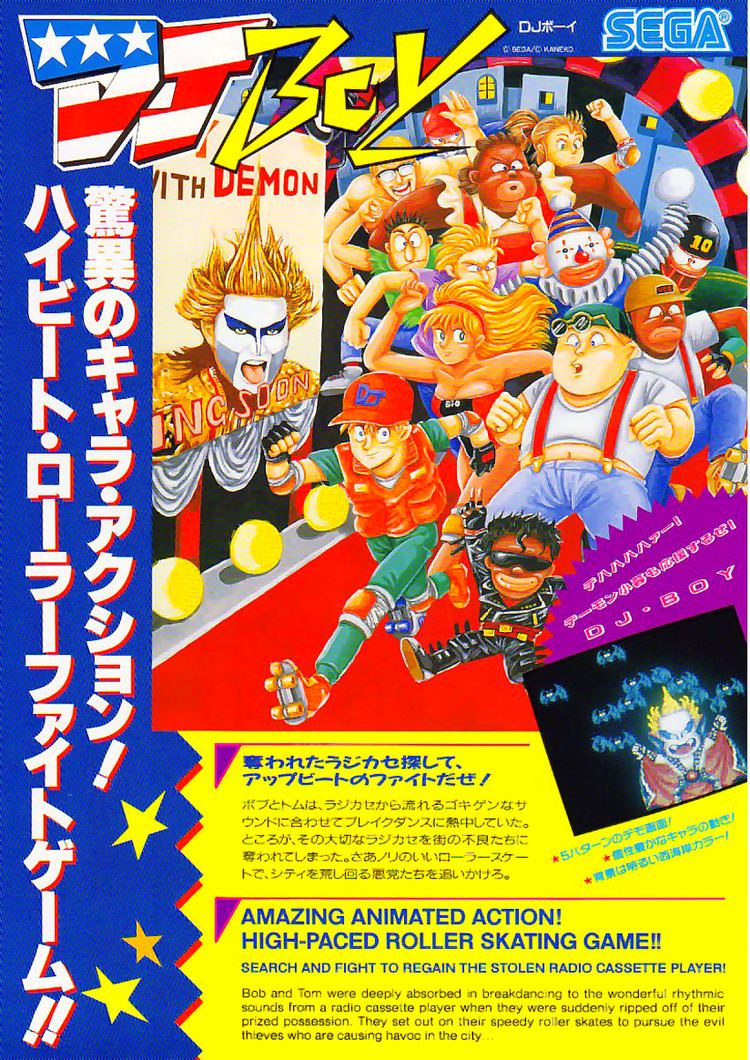 | ||
Sound Z80 driving a Yamaha YM2203 @ 3 MHz and 2xOKI MSM6295 @ 1.5 MHz Similar Kaneko games, Beat 'em up games | ||
Arcade longplay 411 dj boy
DJ Boy (DJボーイ) is a 1989 beat 'em up arcade game developed by Kaneko. It was published in Japan by Kaneko and in North America by Sammy.
Contents
- Arcade longplay 411 dj boy
- Arcade dj boy complete playthrough
- Differences between arcade and home versions
- BRap Boys
- References
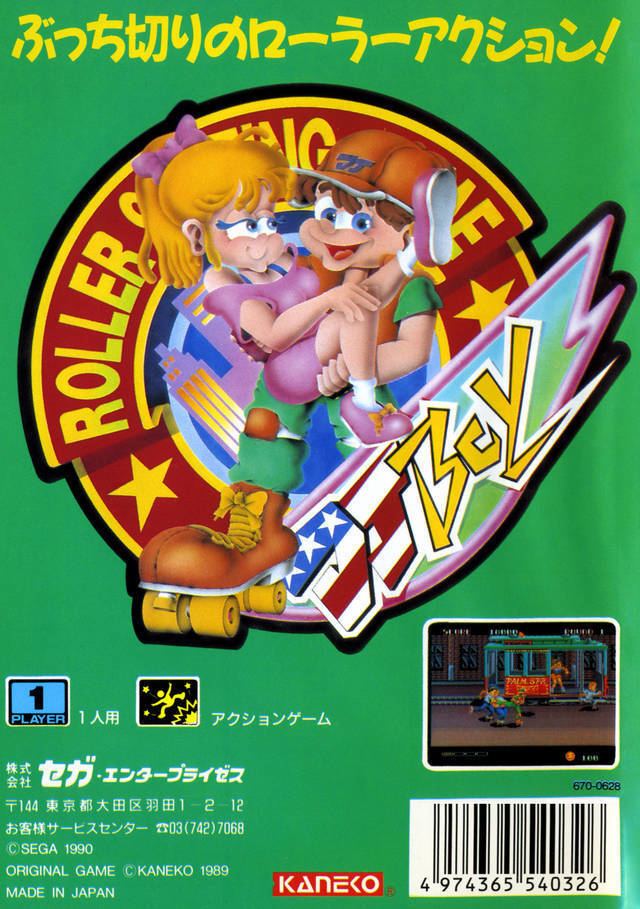
DJ Boy, also known as DJ Kid, was designed as a standard side-scrolling beat'em up game partially based on the hip-hop culture of the U.S. cities. What made the game unique at the time was the fact that many of the characters rode around on roller skates rather than walking or running.
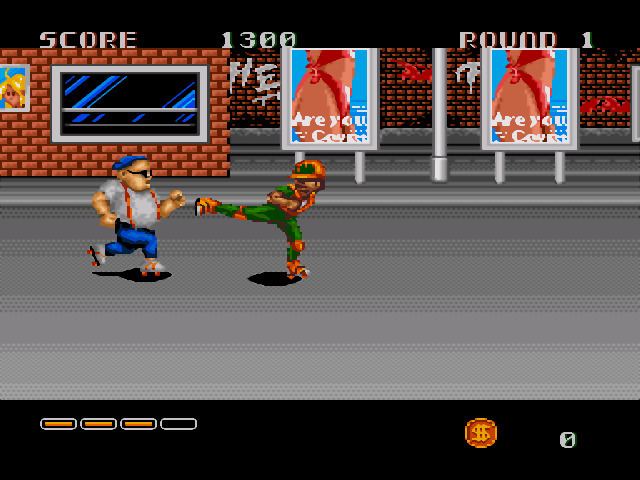
The premise of the home console game: A young man named Donald J. Boy (DJ Boy) is a roller fighter taking part of an ultimate fight-race known as "Rollergame", taking place in Cigaretch City, located on the outskirts of New York City. Many people were excited to see DJ Boy, but a roller fighter gang known as the Dark Knights want him out of the competition. Their leader, Heavy-Met Tony, calls his gang to kidnap his girlfriend Maria, who also comes into town and defeat DJ Boy. DJ Boy must rescue Maria, defeat the Dark Knights, and win the Rollergame competition in one adventure. The arcade plot tells a different story. Two rollerskaters named Bob & Tom (the two playable characters) were breakdancing to the beat of their boombox, until it got stolen from rollerskater thieves (possibly the Dark Knights), in which they must find and defeat them in order to retrieve what is rightfully theirs.

DJ Boy skates across various stages and utilizes hand-to-hand combat moves in order to defeat opponents, culminating with a battle with a boss at the end of each level. Along the path, the player also encounters prizes, which then can be used later to purchase Power-ups from a store located at the end of each level (in the home version, the arcade simply tallied these as points). In the console versions of the game, as another game, River City Ransom, the "prizes" consist of coins that are dropped by defeated enemies, or food items like burgers that restore health.
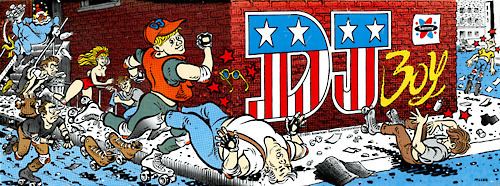
Arcade dj boy complete playthrough
Differences between arcade and home versions

The original Japanese home release of the game featured caricatures that were part of the game's offbeat sense of humor that would've been seen as offensive if they were retained in their western releases. For example, the stage 1 boss was an overweight black woman who attacked by farting (known as "Big Mama" in the home versions). When the player hit Big Mama a certain amount of times, she would temporarily drop to the ground head first and show off her white frilly bloomers underneath her dress and then force herself up again. The arcade versions of the game featured two incarnations of "Big Mama" in the same game, one with light brown skin and another with pink skin. The home console ports gave her dark brown skin and bright red lips in the original Japanese port. The arcade version had the character "fart" occasionally simply as a character animation. The home versions turned it into a kind of "Fart fireball" attack that did damage.
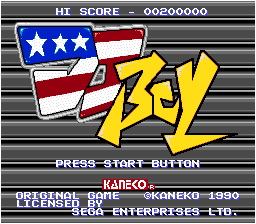
For the subsequent home release in North America and abroad, multiple changes were made. For example, Big Mama (now bearing pink skin) no longer farted; a male stripper character simply appeared in his "Chippendales" outfit from the start, rather than beginning as a homeless looking man who sheds his outer garments to fight. Another change was the substitution of Japanese text featured on in-game billboards with images of scantily clad women (and focusing on crotch images).

This appears to be the same type of "Are you covered?" scantily clad woman joke (a risqué reference to insurance sales) that was featured in Konami's Crime Fighters , another arcade fighting game.
The western console versions of DJ Boy altered the initial encounter with "Big Mama" from the Japanese home version so that she had neon pink skin and instead of farting, threw doughnut-like pastries at the player. The second encounter had her with tan skin in a martial arts outfit (the Japanese version gave her darker skin for this second encounter, while the arcade version simply featured a single encounter then a second encounter with two identical "Big Mama" foes that had light brown and pink skin to distinguish them, rather than an outfit/attack style change).
The home version added cutscenes in which DJ Boy insults his defeated foes. Other alterations include turning the "robot clown" characters into bosses rather than normal enemies, eliminating some of the "homeless guy/stripper", regular enemies, and featuring a boss that was an "evil twin" of DJ Boy (in blue clothing).
The Disk Jockey was Demon Kogure in the Japanese arcade version. However, in the North American and PAL arcade versions, the Disk Jockey was Wolfman Jack, but the in-game sprite is still Demon Kogure. In the home versions, the Disk Jockeys were removed due to memory limitations.
The arcade versions had a two player simultaneous (cooperative or competitive, as players could hurt each other with their attacks) mode with each player controlling a "DJ Boy" (with the second player character also known as OJ, according to the Killer List Of Videogames website) with slightly differently colored clothing (Player 1 in Green & Orange, Player 2 in Green & Red), but the home versions did not.
Mega placed the Mega Drive version at #4 in their list of the 10 Worst Mega Drive Games of All Time.
B.Rap Boys
In 1992, a sequel, B.Rap Boys (Bラップボーイズ) was produced and contained similar designs and content. The game features three player simultaneous action using characters that are different from one another (rather than palette swaps), and the optional use of weapons and vehicles as well as a more robust fighting system.
